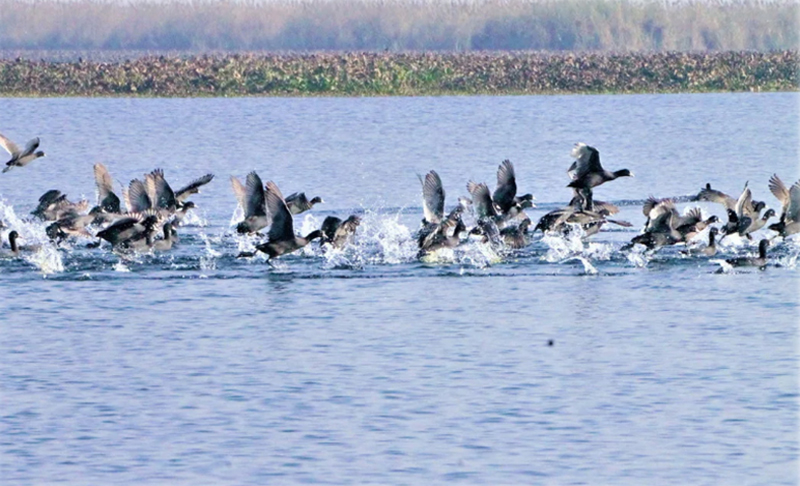 Harike
Harike
Harike welcomes migratory guests amidst winter’s belated arrival
As winter reluctantly unfolds its icy embrace across Northern India, the Harike wetland in Punjab witnesses a delayed but enthusiastic arrival of migratory birds. Approximately 40,000 to 50,000 feathered travelers have descended upon the region, transforming the wetland into a vibrant haven for avian enthusiasts and conservationists alike.
The Harike wetland, sprawling over an impressive 86 square kilometers in the Tarn Taran, Ferozepur, and Kapurthala districts of Punjab, stands as the largest wetland in North India. Nestled at the confluence of the Sutlej and Beas rivers, this ecological gem plays host to a diverse array of migratory water birds during the winter season.
Gitanjali Kanwar, coordinator at World Wild Fund for Nature (WWF) India, remarked, “Around 40,000 to 50,000 migratory birds are estimated to have arrived at Harike.” She highlighted that the delayed onset of winter this season resulted in the tardy arrival of these avian guests, with their usual September appearance pushed back to November.
The census exercise, scheduled for this month, will unveil the exact number of migratory birds gracing the Harike wetland. Anticipation looms as birdwatchers eagerly await the comprehensive data that will shed light on the diverse species that have chosen this haven for their winter sojourn.
These winged visitors, hailing from countries such as Siberia, Mongolia, Uzbekistan, Russia, and beyond, seek refuge in the Harike wetland after their native water bodies freeze over during the winter months. The birds, including species like greylag geese, coots, gadwall, northern pintail, common teal, common pochard, northern shoveler, godwits, redshank, spoonbills, and painted storks, grace the wetland with their ephemeral presence until March and April.
The coordinator expressed optimism about an increase in the number of migratory birds in the coming days, with expectations of larger flocks, including pochard and ducks.
Lakhwinder Singh, the district forest and wildlife officer (Ferozepur range), affirmed the commitment to conservation efforts. He mentioned that teams have been deployed for round-the-clock patrolling at Harike to deter poaching of these migratory wonders, ensuring a safe environment for their temporary residence.
Reflecting on previous years, more than 65,000 migratory birds visited in 2023, marking a 12% decline from the numbers in 2021. The 2022 census was unfortunately skipped due to the constraints imposed by the Covid-19 pandemic. However, in 2021, a total of 74,869 migratory birds from 88 different species made Harike their home, showcasing the wetland’s significance in the realm of avian biodiversity.
Beyond Harike, Punjab boasts five more protected wetlands, including Keshopur Miani wetland, Nangal wetland, Ropar wetland, Kanjli wetland, and Beas river wetland. Additionally, the Ranjit Sagar Dam conservation reserve has earned national recognition as a wetland, contributing to the region’s rich ecological tapestry.
As the migratory birds continue to grace the Harike wetland with their majestic presence, this annual avian extravaganza serves as a poignant reminder of the delicate balance between nature and human activities, urging us to cherish and preserve these natural wonders for generations to come.
(Image and text courtesy: Khalsavox.com)
Support Our Journalism
We cannot do without you.. your contribution supports unbiased journalism
IBNS is not driven by any ism- not wokeism, not racism, not skewed secularism, not hyper right-wing or left liberal ideals, nor by any hardline religious beliefs or hyper nationalism. We want to serve you good old objective news, as they are. We do not judge or preach. We let people decide for themselves. We only try to present factual and well-sourced news.







